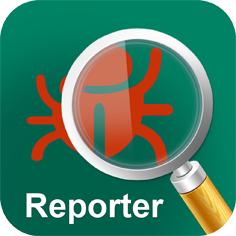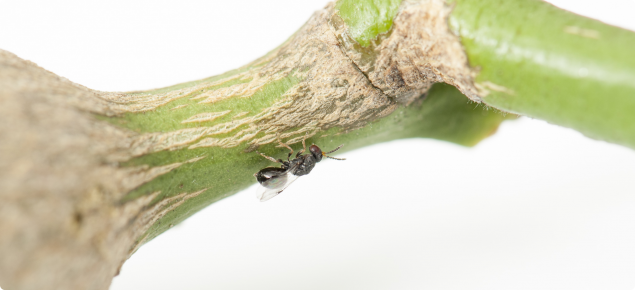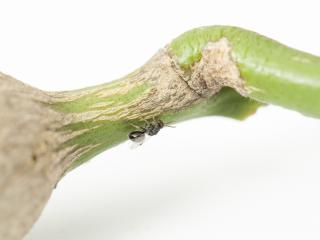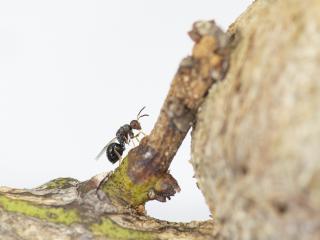Citrus gall wasp is an Australian native insect from northern NSW and Queensland. Over time it has spread throughout the major citrus production regions of eastern Australia, such as the Riverina and Sunraysia.
It produces distinctive galls on cultivated and native citrus making the trees less productive. These galls interfere with nutrient flow in the new shoots and affect fruit setting. Uncontrolled it can result in reduced fruit size, reduced tree vigour and reduced yield with extreme infestations causing branch dieback and potential tree death.
Spread and dispersal
While its natural host is the Australian finger lime (Citrus australasica), citrus gall wasp has become adapted to other citrus varieties. The spread of citrus gall wasp into orchards and backyard citrus trees is usually the result of the introduction of infested citrus plants and the lack of monitoring of gall development in branches.
Citrus gall wasps have a limited flying range meaning that infestations within a property occur by the close presence of infested citrus trees, including across the fence of urban properties. Spread over long distances is facilitated by the wind and by movement of infested trees or by untreated infested branches.
All cultivated citrus varieties can be attacked, though their susceptibility differs. For example:
- Australian finger lime (Citrus australasica) is it's natural host
- ‘Rough lemon’ and ‘Troyer citrange’ rootstocks are very susceptible.
- Grapefruit is the most susceptible cultivated variety.
- Lemons and oranges can be seriously affected.
Life cycle
The citrus gall wasp produces a single generation per year, spending most of its growth and development inside galls in branches.
Adult wasps emerge from galls in spring (September to November), when environmental conditions are suitable. Emergence is closely associated with the spring growth flush.
Adult wasps live for 3–14 days depending on the temperature. Each female can lay about 100 eggs, mostly laid under the bark of young spring shoots. Egg laying starts immediately after wasps emerge with most being laid within the first three days. The eggs hatch in 2–4 weeks and larvae then burrow into the bark for 9–10 month. Woody tissue is formed around the larvae causing the distinctive swelling of the gall. By the following winter the larvae inside the gall pupate ready to emerge again as adults in spring.
Stop the spread - Control infestations
Control of citrus gall wasp in both home backyards and citrus orchards is important to reduce the spread of this pest. Galls in newly infested branches are small and difficult to spot. Check for light-green coloured shoots coming out at right angles from branches.
An integrated management approach is important to obtain effective and long lasting results. This will require the owners of citrus trees to:
- monitor all citrus trees on your property, looking for the stem thickenings (galls) that signal citrus gall wasp infestation from April to June each year.
- remove any visible galls by the end of June each year.
- solarise any galls removed after June before disposing of them.
- encourage neighbours to take the same precautions to control citrus gall wasp on their properties and to prevent its spread.
Report citrus pests
Use the MyPestGuide® Reporter app or web tool to report citrus pests. Make sure you include a photo of the pest and your location when making your report as this is important information for us to confirm the pest and track its spread.
 | MyPestGuide® Reporter Pest and Disease Information Service |



